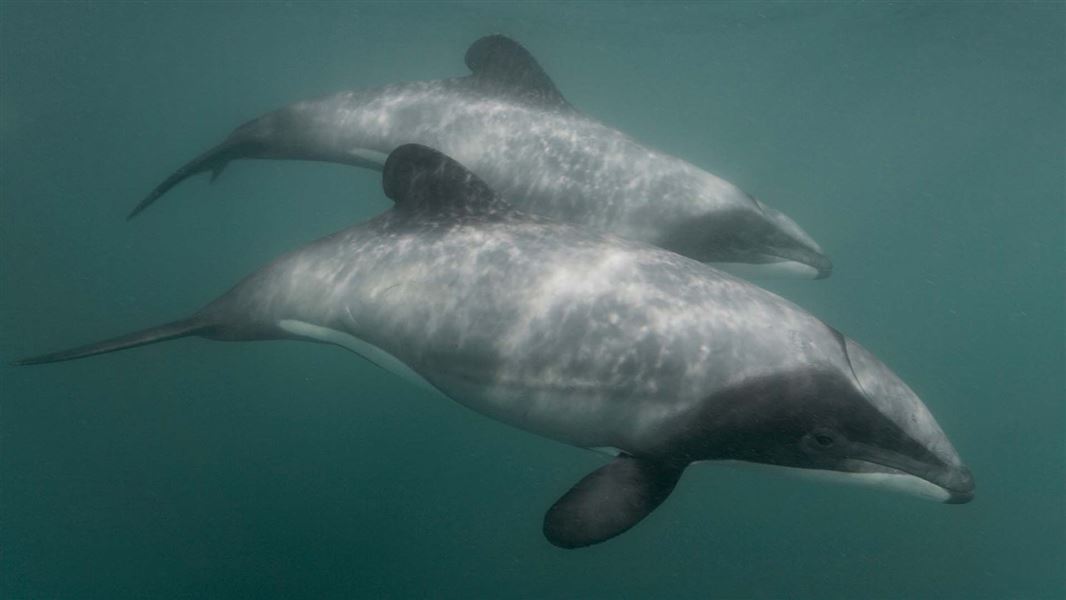Archived content: This media release was accurate on the date of publication.
Date: 22 March 2022
DOC Aquatic Director Elizabeth Heeg says the adult dolphin appeared to have died recently, although it was too early to say what had caused its death. There were no obvious marks on the dolphin’s body.
“DOC staff collected the dolphin and have sent it to Massey University. A necropsy will be done to try to find out how it died,” she says.
“From necropsies done by the Massey team, we can glean really valuable information about this species and the threats they face.”
Elizabeth Heeg says further information received will be uploaded to DOC’s Hector’s and Māui dolphin incident database and to the DOC website during the next scheduled update in early May.
The database records incidents involving Hector’s and Māui dolphins, based on reported events. These include live stranded animals, dolphins found dead on beaches, injured at sea, found floating dead in the ocean, or caught as part of recreational or commercial fishing. This data is shared online, along with any necropsy reports, on a quarterly basis.
“Sadly, this is the twelfth Hector’s dolphin found dead around the South Island since early November 2021,” Elizabeth Heeg says.
“At this stage we don’t know why we’ve had this many Hector’s dolphins wash up over the past four months and we will need to await the remaining necropsy results to understand more about possible causes of death.”
Eight of these were calves. A very decomposed and scavenged Māui dolphin was also found at Muriwai on Christmas Day but was not collected. 10 of the dolphins have been sent to Massey University. When deceased dolphins are reported and retrieved quickly, they can be chilled and sent to the pathologist.
“They are gradually being examined by the pathologist. We’ve received results from necropsies on three calves, but a definite diagnosis wasn’t possible due to decomposition,” she says.
“Maternal separation, potentially during storm conditions, has been cited as the possible cause of death of those three calves.”
Results have also been received for an adult female found near Hokitika on 28 November 2021. Age-related disease has been cited as the probable cause of death of this animal. The other dolphins collected since November are still under investigation. Results will be shared on the DOC website when available.
“The information from the necropsies will help us build our understanding of Hector’s and Māui dolphins and help with future planning for marine protection and management,” Elizabeth Heeg says.
She thanked the member of the public who reported the find: “When people are quick to alert us to discoveries of dead dolphins, it increases the volume and value of the information we can obtain.
“We urge anyone finding a dead Hector’s or Māui dolphin to report it to DOC via 0800 DOC HOT (0800 362 468). It is also important for the public to report live sightings via the DOC webpage, or the hotline.”
Other information
Hector’s dolphins are the world’s smallest dolphin species, with adults measuring about 1.5 m long.
Identifiable through their distinctive round dorsal fins, Hector’s dolphins’ bodies are grey with black and white markings. The population is estimated to be around 15,000 and they are classified as Nationally Vulnerable in the National Threat Classification System.
Hector’s and Māui dolphin bodies are routinely sent to Massey University for necropsy to obtain information such as cause of death (when this can be determined), including examination for disease. Information on the sex, body condition and other biological information is also recorded. The level of decomposition of a dolphin carcass, and whether it has been frozen, are key factors in how much information can be determined.
The work to protect both Hector’s and Māui dolphins is guided by the Hector’s and Māui Dolphins Threat Management Plan.
Contact
For media enquiries contact:
Email: media@doc.govt.nz
